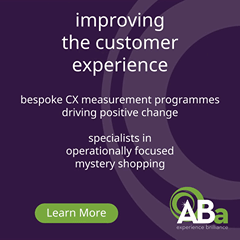The Rules of Engagement
Your customers are changing the rules of engagement, so how can you make it work for both of you, asks Chris Roye, Commercial Director at Astound Commerce.
The KPIs on a typical marketing campaign tend to be all about the immediate financial returns rather than any longer term goals.
While this may be simply stating the obvious, this single focus overlooks what customers really want, which is engagement; engagement with their favourite brands that is more immersive, longer lasting and more rewarding. And if they get it, there’s plenty of research that shows how much more valuable they are to you in terms of lower cost to convert, higher spend, more frequent return visits and willingness to recommend.
In short, consumers will reward suppliers that build engagement and post Covid, they are demanding more of it, because the virus has sensitised them to health, hygiene, employment and wellbeing.
This is about engagement all along the buying journey and beyond, particularly at various steps along the way where things can go wrong if they are not handled well. In the order process for instance, especially for a consumer whose most common stress point post-purchase is, ‘Where is my order?’, the switched-on brand should recognise this cry for help as a business opportunity, not an irritant to be fobbed off with a single automated response from a chatbot.
Capitalising on these opportunities requires a much more joined up response from across the business. Marketing may well say, ‘well, we got you the customer, now it’s your job to keep them,’ but that’s not the right attitude or approach. Several our clients, having realised the need for this single view of customer and a joining up of data and channels, have invested in a Customer Data Platform (CDP), which can provide the data necessary in order to win customers, reward and retain loyalty and increase lifetime value.
The CDP is an important step towards personalisation, enabling brands to build engagement based on preferences around channels and content types. This avoids the danger of engagement becoming a one-way street, where brands are interrupting and over communicating. Consumers have been saying for years that they receive too many emails, but the solution is simple, for instance why not ask them what they want, and shift opt-ins from email to SMS, which is emerging as a preferred and immediate communications channel for anyone with a phone.
Or social media, and during the pandemic more and more brands started WhatsApp groups in order to get messages out about delivery, spot promotions, service etc. Clearly, knowing customers enables retailers to engage with them across multiple channels and through their chosen channels. However, this expansion in the number of channels should not compromise consistency; brands must understand their customers’ preferences in terms of channels, cadence, level of personalisation, and type of response to requirements. And once brands are using the right channels and messages appropriate to the needs of each customer, the relationship becomes a partnership of equals rather than one of supplier to consumer.
Ultimately, it’s a commercial imperative as more and more retail goes digital, forcing retailers to find better ways to differentiate with competitors for whom the old barriers to entry have fallen. However, even while engagement becomes more digital, brands should not lose sight of the value of physical property. The store, while under siege as rent and rates continue to dent profits from floor space, is emerging as a key part of the omni channel jigsaw, particularly with the rise of click and collect and store-as-warehouse.
Engagement is therefore much more than digital. In-store events, pop up shops, festivals, charity events and so on will meet the pent-up demand from customers that have been cooped up for a year.
Retailers are at different stages of their journey to deeper engagement and most still operate silos of both data and action; the key objective now is to consolidate data to enable a single view of the customer so that all stakeholders can act appropriately and consistently. This will then enable retailers to personalise communications based on customer behaviour and preferences and is an area where our clients are investing more and more.
The goal of customer engagement is to grow revenue but at the same time, cut the costs of acquisition and reacquisition, costs that can seriously dent the effectiveness of any campaign. Engagement is about building relationships not just between brands and their customers but between people, and ultimately it is the depth of this engagement that enables brands to build campaigns, content and communications responsive to customer behaviour and preferences.
Find out more here.














